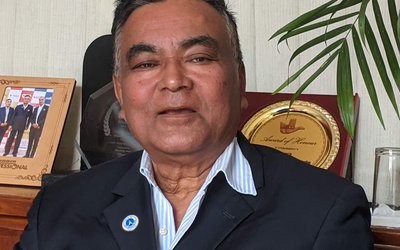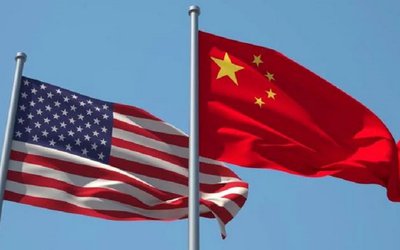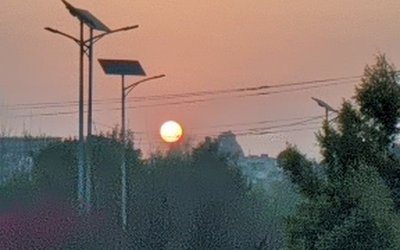
With the major earthquake striking the country, the Ministry of Federal Affairs and Local Development has mobilized all its organizations. ASHOK KUMAR JHA, deputy Program Coordinator for Project for Strengthening the National Rural Transport Program (SNRTP), has come up with the programs to get involved in the post earthquake disaster program. Jha spoke to New Spotlight on various issues. Excerpts:
How did SNRTP respond to the disaster?
After the earthquake of April 25, I asked all our site offices to assess the damage in the rural road sector. I have also approached the ministry to copy this project in non-SNRTP districts. We have included Gorkha, Sindhupalchowk and Dolakha in our project areas. With the consultation of the World Bank, we have decided to make earthquake responsive programs. Our projects were initially in 33 districts and now we have incorporated in these three districts.
Have you started to allocate the budget?
As it will take a bit more time for the SNRTP’s regular budget to flow, we have discussed the matter with the Bank to immediately start the programs. To show that this project also responded in the earthquake disaster prone districts, we have immediately implemented cash for work and cash for transfer program. Under the cash for work program, we have decided to take the road maintenance work in the areas so that affected population can get benefits. Our aim is to provide cash.
Will there be any program for those affected districts with SNRTP?
Earthquake also affected some districts originally with SNRTP. We have also initiated the programs to provide them direct and indirect benefits to the regular workers there. We transferred an additional one and a half month's salary to the workers in the affected districts.
What additional planning does SNRTP have?
As the earthquake badly devastated the buildings of DOLIDAR, we have decided to request the World Bank to support the construction of buildings. With the request from our Ministry, the Ministry of Finance has already requested the World Bank in this regard; the ball is now in the World Bank’s court. The bank is positive about our proposal and we are now waiting for its response. We are now seeking the money from emergency fund of the bank for post earthquake disaster reconstruction.
Do you encourage other organizations besides the World Bank?
We persuade even our technical partner organization ILO to support the program to respond to the earthquake. With the request of our office, ILO agreed to release 700.000 dollars. ILO is going to support cash for work in Rasuwa, Nuwakot, Dhading, Tanahu and Kaski districts. They will work under our facilitation. Our cash for work is inspired by the concept to respond to the earthquake victims. This will continue till the regular budget of SNRPT flow -- it will take seven to eight months. This is our contingency plan for three districts. If we cannot respond to earthquake victims now, what is the use to include them? We are going there with the programs with additional budget.
How many districts have you incorporated within the project?
Out of 14 main affected districts, Dhading is under SNRPT, and Nuwakot, Rasuwa, some parts of Makwanpur. By taking special provisions of the agreement, we included three districts Gorkha, Lamjung and Sindhupalchwok.
Do you have a plan to incorporate other organizations also?
There is a provision in the agreement that we can scale up and scale down the program with the consent of both the parties. We may even include some more districts like Dolakha, Ramechhap and Kavrepalancwok. We have already requested ILO to assess the damage and identify remedies in these districts. After the assessment, the government can request the donors to support districts. ILO is on the way to assess the damage and remedies. Government may bring other donors or go for World Bank.
Since you have the budget for 33 districts, how can you manage the budget for three additional districts and manage budget for another three districts?
We have 175 million dollars for 33 districts. As the way the demands are growing, it is not sufficient. We are committed to bring an additional budget by 2017, additional 100 million dollars. The inclusion of the three districts helped us to increase the additional budget. We don’t have to worry about the money and the money is there.
- IME GROUP: Expands Into Paper Industry
- Mar 24, 2025
- CPN UML: Instigated By India
- Mar 23, 2025
- ADB’S CHIEF ECONOMIST: Nepal Reduces Poverty
- Mar 11, 2025
- FM DR. DEUBA: A Successful Visit
- Mar 11, 2025
- MD GHISING: Target Of Personal Grudge
- Mar 09, 2025















